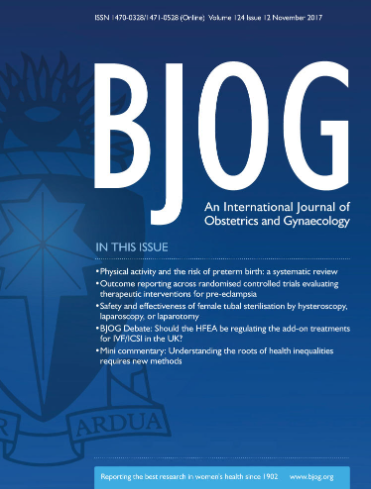Propranolol and Oxytocin-Induced Contractility in Gravid Human Myometrium: An Ex Vivo Laboratory Study
Abstract
Objective
To determine the effect of propranolol on myometrial contractions induced by low dose and high dose oxytocin.
Design
Prospective ex vivo laboratory study.
Setting
Mount Sinai Hospital, Toronto.
Population
Full-term parturients who underwent elective caesarean deliveries (CD).
Methods
Two models were developed in the organ bath chamber using myometrial samples obtained during CDs: (i) Labor induction-augmentation model with low-dose oxytocin consisting of 3 groups with the administration of propranolol before and during simulated labor, and a control group. (ii) Postpartum haemorrhage (PPH) model with high-dose oxytocin consisting of 4 groups with the administration of propranolol during and/or after augmented labor (desensitised with oxytocin), and a control group.
Main Outcome Measures
Myometrial contractility was recorded using force transducers.
Results
In the labor induction-augmentation model, propranolol pre-treatment produced a higher area under the curve (AUC) of myometrial contractility induced by low-dose oxytocin (relative percentage difference [diff]: 20.4%; 95% CI [1.4%, 43.2%], p = 0.035) compared to control; however, no difference was observed when propranolol was given after the initiation of labor. In the oxytocin-desensitised PPH model, the AUC of myometrial contractility induced by high-dose oxytocin was improved with propranolol pre-treatment (diff 25.4% [0.2%, 56.8%], p = 0.048), co-treatment (diff 26.7% [3.7%, 54.7%], p = 0.02), and both pre- and co-treatment (diff 28.4% [7.0%, 54.1%], p = 0.007) when compared to the control group.
Conclusions
Our ex vivo study suggests that propranolol can augment uterine activity by approximately 20%–25% when administered early during labor induction and augmentation. Clinical studies are warranted to determine the relevance of these findings in vivo.
Trial Registration
ClinicalTrials.gov Identifier: NCT03434444; https://clinicaltrials.gov/


 求助内容:
求助内容: 应助结果提醒方式:
应助结果提醒方式:


